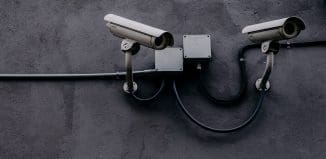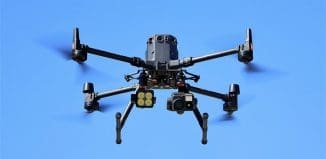Police Officers Seek Technological Equipment Update
This post is also available in:  עברית (Hebrew)
עברית (Hebrew)
Government organizations can be slow to change, especially when it comes to technology. But many law enforcement officers accustomed to using smartphones with wireless devices in their personal lives are itching to use the same type of technology on duty. And manufacturers of headsets, microphones, and wireless devices are working to meet that challenge.
“Because they live in a world now that’s full of all kinds of wireless things for their smartphones, officers have an expectation that their two-way radios should be similar,” says Dave George, president of Pryme Radio Products.
“We’re seeing a 20% to 30% year-to-year growth in Bluetooth for police. But most still want wired radio microphones,” says Motorola’s Senior Product Manager Danny Sanchez.
Making Bluetooth devices for law enforcement requires additional security, as well as ease of use under stressful situations, says Sanchez. The company has put an effort to make the communication connection occur more quickly, for both safety and customer satisfaction. But patrol officers were also used to instantaneous use of their push-to-talk buttons with wired radio microphones. Sanchez says wireless accessories allow Bluetooth radio devices to provide the same level of performance once paired.
According to policemag.com, Motorola is offering a different type of communications solution with its new SI-500 device, a hybrid between a speaker microphone and body-worn camera. It uses Bluetooth to act as a hub for communications, not just for the radio, says Sanchez. “On the surveillance side, there’s a lot more interest in disguising the two-way radio,” says Pryme’s George. “It could be for undercover or just people who want to be discreet. So they want accessories that either are or look exactly like the ones that most of the public are wearing to work with their cell phones.” Most of these utilize Bluetooth. And there is a variety of compatible systems that allow officers to operate radios hidden on their person with a remote disguised as a car key fob or something similarly discreet.
Another major trend in law enforcement communications is integrated hearing protection. When most people think of hearing protection they picture large over-ear muffs being worn by an officer training on the shooting range. And while this equipment still exists, there are many more options that incorporate hearing protection and noise cancelation technology into standard communications equipment to meet officers’ needs.
“I think for the patrol officer, hearing protection is becoming more of a demand,” says Matt Hein, CEO of Silynx Communications, which manufactures in-ear headsets.. More people are becoming aware of the dangers of hearing loss, and the fact that exposure to loud noises during shooting exercises and on duty can cause serious irreparable damage over time.
To make sure SWAT officers can hear ambient noise even with earbuds in their ears, Silynx engineers put mics on the outside of all of its headsets. The user can set the volume for these external mics to his or her own preference, even down to zero.
Officers have also requested ways to use their smartphones to control their radios, similar to the way a phone can act as a television remote control with the right application. Now, without physically touching their radios, officers can simply use one of a growing number of PTT apps to answer radio calls and change settings including volume with their phones. This is especially useful for undercover officers who can easily blend in appearing to use a smartphone like anyone else.
Motorola has taken the route of developing a specific device to pair with its radios to achieve the same goal. The LEX L10 can be securely touch-paired with APX radios to remotely manage the radio’s zone, channels, volume, and battery strength, as well as provide a backup route for emergency signaling during undercover missions, according to Motorola.
“It’s pretty interesting, what’s going on between the merge of radios with smartphones,” says George. “It’s worth watching.”






























